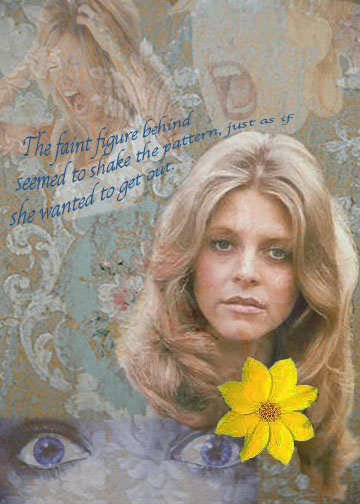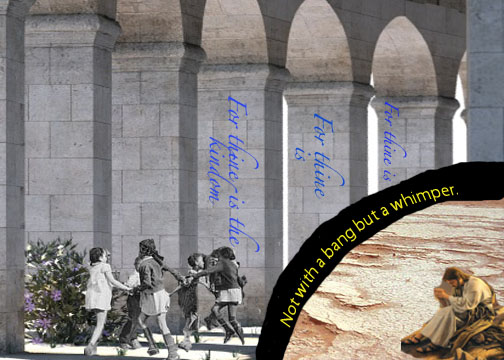
ENHANCEMENT
Digital media enhances student learning
The following student examples of illuminated texts demonstrate that kind of engagement through careful attention to rhetorical and stylistic choices. The sophomores in Greg's American literature class were asked to illuminate a poem or short story using Photoshop. They needed only to incorporate words from the text that they found relevant to their interpretation; the rest of the design was up to them.
Illuminating "The Yellow Wallpaper"
 Stephanie Bristol
Stephanie Bristol
This project illuminates the 1892 short story by Charlotte Perkins Gilman, "The Yellow Wallpaper." The story, with feminist undertones, features the psychological breakdown of a woman who feels trapped by her physician husband and the yellow wallpaper lining her room.
The quote used here — "The faint figure seemed to shake the pattern, just as if she wanted to get out" — describes the moment when the narrator "sees" herself trapped in the paper.
The student superimposes images of distressed women over a yellow wallpaper background to emphasize the character's psychological struggle, as well as to literalize her constrained presence in the wallpaper.
Illuminating "The Hollow Men"
 Christopher Morey
Christopher Morey
For Thine is the Kingdom
For Thine is
Life is
For Thine is the
This is the way the world ends
This is the way the world ends
This is the way the world ends
Not with a bang but a whimper.
Using the closing lines of T. S. Eliot's difficult modernist poem, this student visualizes the children's song cadence with an image of dancing in another world. The image of the man, looking Christ-like in prayer, emphasizes this student's reading of the redemptive message of the poem—the "whimper," he interprets, is the quiet utterance of prayer that bolsters Eliot's theme of quiet religious salvation.
"The assignment was a very nice break from the traditional paper. I enjoy writing, but it can be hard when the subject that you are writing on is not as interesting as other things."
"Using the computers for the illuminated text assignment was a good way to play to other people's strengths who may be more comfortable with that medium than with a traditional paper, and while computers aren't necessarily my strength, I still found it a refreshing break from the routine."
"Translating the text into an image concreted the idea that stories and poems are art, and are not so different from looking at a picture or painting."
"I thought that the illuminated text project was an awesome idea, it was definitely my favorite assignment."